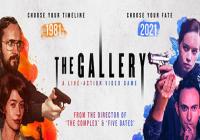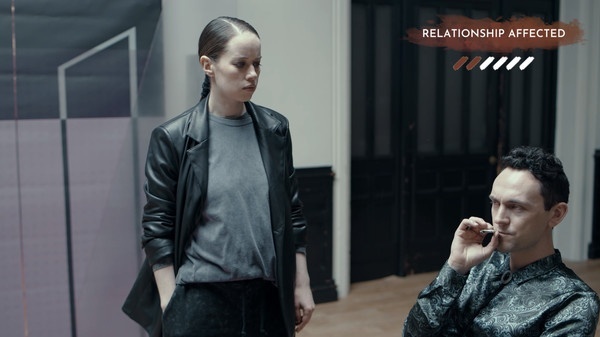The Gallery (PC) Review
By Michael McCann  16.11.2022
16.11.2022

FMV would be a dirty word if it wasn't an acronym, and a dirty one at that. It stands for 'full-motion video' and since 1993, when Howard Lincoln said that Night Trap would never come to a Nintendo system ever, FMV titles have carried a stigma along with them. What's surprising is Lincoln said this not because of the low resolution, frame-in-frame images, the limited interactivity, or the poor acting that was on display, but because of what was, at the time, considered to be a flagrant example of sexualised and violent content contained within. It contributed to rating boards such CERO and PEGI being formed, ensuring that children wouldn't be scarred for life by unwittingly purchasing an FMV title. Despite all of this, after almost 30 years, and long after the Phillips CDi and Sega CD have passed away, there is still a staunch commitment by some to make FMV titles. Some now even receive critical success, such as Sam Barlow's recent trilogy of FMV titles. The following review is a look at The Gallery. Oh, and by the way, Night Trap was eventually released on a Nintendo system in 2018…
The Gallery, written by Paul Raschid (who has previous experience writing for FMV with The Complex and Five Dates), and produced and published by Aviary Films, which appear to primarily be a film production house that's branching their business out to include interactive media, is a modern FMV title. As alluded to, it's a genre that has had its sliding doors moment during the advent of the invention of the CD Rom, it could have been touted as the future of interactive and cross-media entertainment but ultimately it ended up being a fad due to limitations with the format. For that reason, FMV feels like a somewhat antiquated term that rather aptly applies to the themes presented in The Gallery - chiefly, that of the more things change the more they stay the same.
It presents two parallel modes, one set in 1981 and one set in 2021; 40 years apart, and what's interesting is that they both follow the same overarching narrative albeit with branching paths, a swapped protagonist and antagonist, and historically accurate plot devices and details being the main edifice for the experience. The production on both modes is akin to something like a BBC thriller or drama with particular credit going to the main cast, Anna Popplewell and George Blagden, and by extension also the make-up crew, as they are barely recognisable in each timeline as their counterpart. The story is straightforward, an art curator is held hostage for a night by a fanatic portraitist, but it's a perfect construct for creating tension and feeling like the decisions that have to be made all carry weight. It is although less interesting what happens in here rather than how the details converge and digress through each timeline and how these decisions affect these elements as well as the outcome of the parallel stories.

Interactivity manifests itself in the time-honoured tradition of binary choices being laid out at key junctures of the narrative. The protagonist might look at a sharp object sat on a table, the choices are to either pick up the sharp object or don't pick up the sharp object. Choices can either be set to a timer or have no timer at all to make the decision, though unless otherwise incapacitated it is far more engaging with the timer on. It is however sad to see that when this timer runs out it isn't possible to make no choice at all. It is choice, sure, but also the illusion of choice, as is the case with 99.9% of branching narratives, as replay will often reveal the core of the story remains largely unaffected by your decisions until the conclusion.
In this regard The Gallery is more passive than interactive, running for about an hour and a half on each storyline playthrough, and it doesn't actually present that many choices throughout that time, but benefits from this because it doesn't really have to pretend to be anything other than an alternative for a good night in. It does take one step further to gamify itself, however, with a relationship meter, implemented almost like it would be in a Telltale game, whereby something pops up on screen like "Jim will remember that," but disappointingly, though also very understandably, it never alters how scenes will play out.

Cubed3 Rating
Very Good - Bronze Award

Today, much like mullets, the FMV is a niche prospect, but it is growing in popularity again. It's becoming a better fit for purpose in tandem with improvements in technology and streaming services, allowing for some more interesting and convenient delivery methods for the medium, blurring the lines of what a passive and interactive piece of media can be. The Gallery presents a compelling story, with some good tension, interesting concepts and even some decent jokes smattered in there, but it's the core concept of how the details shift through the two timelines that is its most compelling aspect. The marriage of content and the medium. Certainly, it would be recommended for an evening in with friends, which is a fair metric to judge it by.

The Gallery
![]() 7/10
7/10
![]() 0
(0 Votes)
0
(0 Votes)
 None
None  None
None  None
None  None
None Comments
Comments are currently disabled

 Sign In
Sign In Game Details
Game Details Subscribe to this topic
Subscribe to this topic Features
Features





 Top
Top

